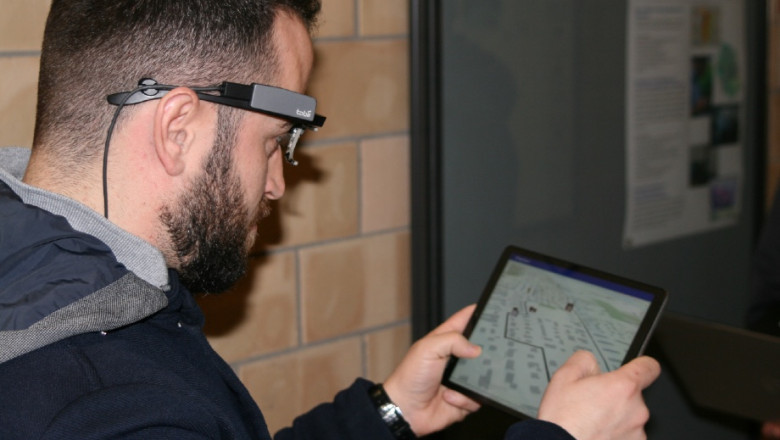views

Companies operating in the North America Eye Tracking Market are generally employing the following strategies:
· Focusing on Specific Verticals: Many companies tailor their solutions to meet the unique demands of high-growth sectors like automotive (driver monitoring), healthcare (diagnostics, assistive communication), consumer electronics (AR/VR interaction), and research (psychology, marketing).
· Developing Integrated Solutions: There's a trend towards offering comprehensive packages that include both hardware (eye trackers, cameras, sensors) and sophisticated software for data analysis, visualization, and integration with other systems.
· Emphasizing AI and Machine Learning: Leveraging AI and ML algorithms to enhance the accuracy, robustness, and real-time capabilities of eye tracking systems, as well as to extract deeper insights from the collected data.
· Improving User Experience and Accessibility: Innovations are focusing on making eye tracking technology more user-friendly, with features like calibration-free operation and seamless integration into various devices. Accessibility for individuals with disabilities remains a significant application area.
· Strategic Partnerships and Collaborations: Forming alliances with other technology providers, research institutions, and industry players to expand market reach, integrate solutions, and drive innovation.
· Addressing Privacy Concerns: As eye tracking technology becomes more pervasive, companies are increasingly focusing on data security and user privacy to build trust and ensure responsible deployment.
Emerging Innovations in the North American Eye Tracking Market
The North American eye tracking market is witnessing several exciting innovations:
· Integration with Augmented and Virtual Reality (AR/VR): Eye tracking is becoming a crucial component for enhancing user interaction and immersion in AR/VR applications, enabling features like foveated rendering (improving visual clarity while reducing processing power) and gaze-based interaction. Companies like Tobii and Pupil Labs are actively involved in this space.
· Advancements in Driver Monitoring Systems (DMS): Next-generation DMS in the automotive sector are incorporating more sophisticated eye tracking combined with facial recognition and other sensors to detect driver drowsiness, distraction, and even health conditions. Smart Eye and Seeing Machines are key players here.
· Calibration-Free Eye Tracking: Technologies that eliminate the need for manual calibration are making eye tracking more convenient and accessible for a wider range of applications, particularly in consumer electronics and research. Affectiva (a Smart Eye company) has made notable progress in this area.
· Mobile and Wearable Eye Tracking: Compact and portable eye tracking solutions, often in the form of glasses or integrated into mobile devices, are expanding the possibilities for real-world research and new applications.
· Multi-Modal Sensing: Combining eye tracking data with other physiological signals (e.g., EEG, heart rate) and behavioral data (e.g., facial expressions) to gain a more holistic understanding of user states and responses, particularly relevant in research and healthcare through platforms like iMotions.
· AI-Powered Gaze Analysis: Sophisticated AI algorithms are being developed to analyze gaze patterns for various purposes, including lie detection, cognitive assessment, and understanding user attention in marketing and UX research.
· Iris Recognition Integration: Combining eye tracking with iris recognition technology for enhanced security and personalized user experiences in automotive and other sectors.
Key Developments in the North American Eye Tracking Market
Recent developments in the North American market include:
· Increased Adoption in Healthcare: Eye tracking is gaining traction for diagnosing neurological disorders (like multiple sclerosis, as seen with Health Canada's approval of ETNA-MS), assessing mental health conditions, and providing assistive communication for individuals with disabilities (companies like EyeTech Digital Systems, if my initial information was accurate, would likely be active in this area with products like the EyeOn Elite).
· Integration into Consumer Electronics: Major tech companies like Apple are incorporating eye tracking features directly into their devices (e.g., iPad and iPhone accessibility features), signaling a trend towards broader consumer adoption.
· Growing Use in Research: Universities and research institutions across North America are increasingly utilizing eye tracking to study a wide range of human behaviors and cognitive processes.
· Advancements in Automotive Safety Regulations: The push for enhanced vehicle safety is driving the integration of advanced DMS featuring eye tracking into new vehicle models.
· Investments and Partnerships: Continued investment in research and development, along with strategic collaborations between technology companies and industry stakeholders, is fueling innovation and market growth.
While specific details about "Eyetech Digital Systems" and their precise strategies in North America are elusive based on my current search, the broader trends indicate a dynamic and rapidly evolving market driven by innovation across various sectors. Companies that can offer accurate, reliable, user-friendly, and integrated eye tracking solutions tailored to specific industry needs are well-positioned for success in the North American market.






















Comments
0 comment